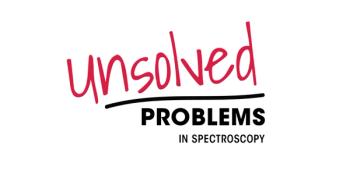
Cancer Diagnosis: New Raman Spectroscopy Method Eliminates Fluorescence Interference
Researchers from Tsinghua University have developed an innovative dual-wavelength Raman spectroscopy method that eliminates fluorescence interference in measuring esophageal tissue samples. This development enables precise identification of molecular changes in these tissues, with potential applications in early esophageal cancer diagnosis.
Fluorescence interference has long been a barrier to the effective application of Raman spectroscopy in biological detection and medical diagnostics. A team of researchers from Tsinghua University has tackled this challenge, introducing a novel dual-wavelength Raman method that significantly enhances the accuracy of spectroscopic analysis. Their findings, published in Spectrochimica Acta Part A: Molecular and Biomolecular Spectroscopy, mark a significant step forward in non-invasive diagnostics, particularly for early esophageal cancer detection (1).
Esophageal cancer ranks as the sixth most common gastrointestinal cancer in the United States, with approximately 20,640 new cases annually. Globally, it is the eighth most common cancer. A high-risk area known as the "esophageal cancer belt," spanning regions of northern Iran, southern Russia, central Asia, and northern China, accounts for 90% of cases as squamous cell carcinoma (SCC). In this region, esophageal cancer is the fourth leading cause of cancer-related deaths (2,3).
Overcoming Fluorescence Challenges in Raman Spectroscopy
Raman spectroscopy provides a molecular fingerprint of samples, making it a powerful tool for identifying chemical composition. Its advantages, including label-free, non-destructive, and in situ analysis, have drawn significant interest in medical diagnostics. However, the weak Raman scattering signal is often masked by strong fluorescence from molecules in biological samples, compromising measurement sensitivity and accuracy (1).
Traditional methods to address fluorescence interference, such as mathematical modeling, physical suppression, and wavelength-domain techniques, have notable limitations. These include reliance on subjective parameters, potential biological toxicity, and complications arising from overlapping or altered Raman spectra. The Tsinghua team, led by Aoran Fan and including Xiaoyu Zhang, Peng Jin, Fumei Yin, Jianqiu Sheng, Weigang Ma, Haidong Wang, and Xing Zhang, developed a dual-wavelength method to resolve these challenges. This work was conducted at the Key Laboratory for Thermal Science and Power Engineering at the Department of Engineering Mechanics, Tsinghua University, Beijing.
The Dual-Wavelength Raman Method
The researchers employed two lasers with different wavelengths to excite Raman signals from the same spatial region of biological tissue. An experiment with porcine esophagus samples was conducted using the 633 nm and 532 nm lasers in the measurement range of 670–710 nm. By utilizing a two-step normalization calibration process, they effectively eliminated both ordinary fluorescence and wavelength-dependent fluorescence, particularly from porphyrins—a key challenge in traditional methods (1).
This approach offers several advantages (1):
Enhanced spectral accuracy: avoiding spectral overlap and compensating for differences in electronic states induced by varying wavelengths.
Improved reliability: reducing the uncertainty of data analysis through a simplified and effective normalization procedure.
Broader applicability: demonstrating the capability to analyze biological tissues across a range of conditions without introducing external substances or relying on prolonged laser exposure.
Experimental Validation and Cancer Diagnosis Applications
The team validated their method using porcine esophageal tissue and human esophageal mucosa specimens. By comparing normal, precancerous, and early cancer samples, they identified molecular signatures indicative of carcinogenesis. Key findings included changes in phenylalanine concentrations and C=C bond vibrations in porphyrins, which are associated with varying degrees of malignancy (1).
A visual representation of these changes was captured through Raman cloud imaging, showcasing distinct spectral patterns for different tissue types. This enabled precise identification and imaging of indefinite tumors, underscoring the potential for clinical applications in early cancer diagnosis (1).
Implications and Future Directions
This novel technique positions Raman spectroscopy as a more viable tool for in vivo medical diagnostics. By resolving fluorescence-related challenges, the dual-wavelength method enhances the feasibility of real-time, non-invasive cancer detection. The research team envisions broader applications of their approach, extending beyond oncology to other areas requiring high-accuracy molecular analysis.
As fluorescence remains a significant obstacle in Raman spectroscopy, this dual excitation wavelength method represents a meaaningful development. Future studies will likely focus on refining the technology for broader clinical adoption and exploring its utility in other biological and medical fields.
References
(1) Fan, A.; Zhang, X.; Jin, P.; Yin, F.; Sheng, J.; Ma, W.; Wang, H.; Zhang, X. A High-Quality Fluorescence Elimination Dual-Wavelength Raman Method for Biological Detection and Its Application in Cancer Diagnosis. Spectrochim. Acta Part A Mol. Biomol. Spectrosc. 2025, 329, 125539. DOI: DOI:
(2) NIH National Library of Medicine Esophageal Cancer Page.
(3) Shaheen, N.; Ransohoff, D. F. Gastroesophageal Reflux, Barrett Esophagus, and Esophageal Cancer: Scientific Review. JAMA 2002, 287 (15), 1972–1981. DOI:
Newsletter
Get essential updates on the latest spectroscopy technologies, regulatory standards, and best practices—subscribe today to Spectroscopy.





